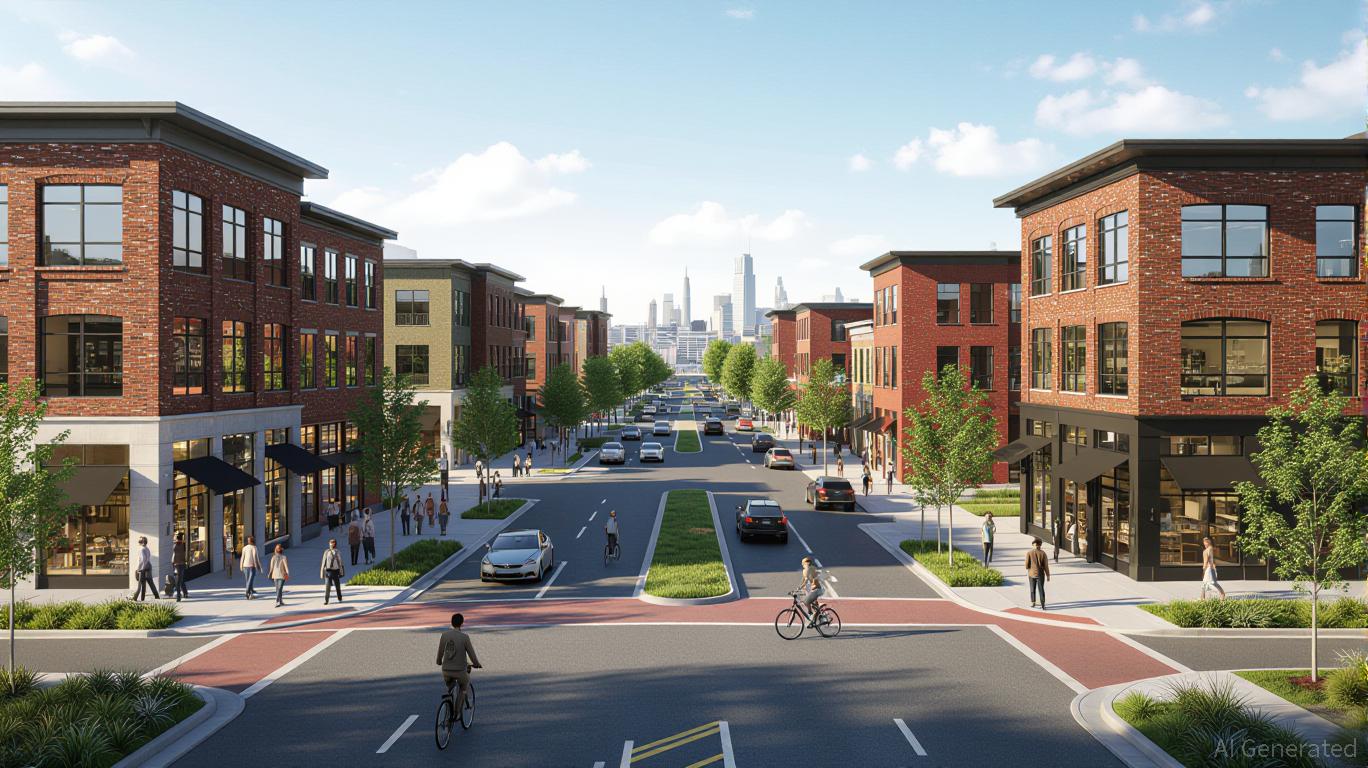Infrastructure-Connected Real Estate: Emerging Opportunities in Post-Industrial Zones
- Post-industrial corridors are becoming strategic real estate hubs through infrastructure upgrades and PPPs, driven by state funding and governance innovation. - Webster , NY secured $38M in grants (2023-2025) for transportation , wastewater, and downtown revitalization, repositioning industrial sites for mixed-use development. - Ohio's $100M Residential Development Revolving Loan Program and $121.5M Brownfield initiatives demonstrate state-level policy alignment with infrastructure-linked value creation.
The redevelopment of former industrial corridors into thriving centers for business and housing has shifted from a speculative idea to a necessary strategy. As cities throughout the United States transition from traditional manufacturing bases to more diverse, service-driven economies, real estate tied to infrastructure is becoming a prominent investment focus. This evolution is fueled by a combination of state funding initiatives, collaborations between the public and private sectors (PPPs), and progressive policy approaches. The example of

Webster, NY: A Model for Infrastructure-Driven Renewal
The Village of Webster stands out for its effective use of infrastructure grants to enhance real estate prospects. From 2023 to 2025, the village secured more than $38 million in combined state and federal support, aimed at both essential upgrades and economic growth. A $9.8 million FAST NY Grant is dedicated to improving transportation infrastructure at the Xerox campus and the NEAT and fairlife manufacturing locations,
In addition, the Webster Forward project was awarded $4.5 million through the NY Forward program to upgrade downtown features, such as Veterans Memorial Park and Harmony House
Such initiatives reflect a wider movement: post-industrial towns are no longer waiting for decline but are proactively shaping their futures. This approach creates a real estate environment where infrastructure investments are directly linked to rising property values, especially in areas shifting from single-purpose industrial use to vibrant, mixed-use communities.
State Funding Initiatives and the Expansion of PPPs
Webster’s achievements are part of a broader trend of state-driven efforts to speed up post-industrial renewal. For example, Ohio’s 2025 biennial budget
Public-private partnerships (PPPs) are playing an increasingly vital role in these transformations. According to a JLL analysis,
Nevertheless, these partnerships can be complex.
Investment Perspective: Aligning with Policy and Infrastructure
For those looking to invest, the message is straightforward: real estate tied to infrastructure in former industrial areas offers strong potential when supported by state funding and PPP structures. Insights from Webster and Ohio point to three main drivers:
1. Infrastructure as a Driver: Funding for transportation, utilities, and environmental improvements directly increases land value and development prospects.
2. Policy Support: State initiatives like NY Forward and Ohio’s Residential Development Revolving Loan Program offer reliable funding, lowering investment risk.
3. Innovative Governance: Progressive municipalities are adopting hybrid models that combine public oversight with market-driven efficiency, as demonstrated by the TIRGI approach
Investors should focus on properties in areas with active PPP projects and clear infrastructure plans. Webster’s NEAT and fairlife locations, for example, are set to gain from both immediate infrastructure improvements and the long-term benefits of economic clustering. Similarly, Ohio’s All Ohio Future Fund—which allocates $92 million for site development—provides a repeatable framework for identifying promising corridors
Conclusion: Forging New Connections Between Industry and Commerce
The intersection of infrastructure investment, state policy, and PPP innovation is transforming the landscape of post-industrial real estate. Towns like Webster, NY, are proving that thoughtful redevelopment can be both practical and profitable. For investors, the key is to identify early opportunities in communities where governance and funding are aligned. As frameworks like TIRGI and similar models evolve, barriers to entry for infrastructure-focused real estate are expected to diminish, positioning this sector as a major driver of growth in the coming decade.
Disclaimer: The content of this article solely reflects the author's opinion and does not represent the platform in any capacity. This article is not intended to serve as a reference for making investment decisions.
You may also like
Bitcoin Updates: Federal Reserve's Softer Stance and ETF Investments Drive Bitcoin's Recovery to $91,000
- Bitcoin surged above $91,000 in December 2025 as Fed rate-cut odds hit 70%, driven by dovish signals and ETF inflows reversing outflows. - Technical indicators showed oversold RSI levels and seller exhaustion, while altcoins like XRP/ZEC jumped 7.7%-17% amid $2.95T market cap growth. - Institutional flows favored Solana ETFs and altcoin products, but MSCI's crypto exclusion policy sparked backlash from advocates like Michael Saylor. - Retail fear metrics and $605M liquidations highlighted fragility, yet

Ethereum Updates Today: Institutional Investments Rise While Prices Remain Flat: The Challenge of Ethereum's Potential Breakout
- Ethereum's MVRV Z-Score (0.29) signals potential buying opportunities amid prolonged accumulation and institutional ETF inflows. - Retail investors reduced exposure while whales (10K+ ETH) accumulated, contrasting with $92M ETH ETF inflows on Nov 24. - BlackRock's staked ETH ETF filing threatens DATs' opaque fee models as ETH price struggles to reclaim $2,800 despite technical buildup. - Divergent ETF flows ($88M ETHA inflow vs. $53M outflow) highlight market volatility, with analysts eyeing $9K breakout

Stablecoins Solidify Their Position as the Foundation of Global Finance, Surpassing Conventional Powerhouses
- A 214M USDT transfer highlights stablecoins' growing role as global finance's backbone, surpassing traditional payment giants. - VCI Global's $50M OOB token accumulation underscores institutional confidence in Tether-aligned ecosystems for merchant adoption. - Tether's $180B USDT circulation and $12T+ 2023 volume reflect structural adoption in cross-border payments and settlements. - Stablecoin growth challenges traditional intermediaries while Oobit's platform incentivizes real-world commerce adoption t
Character.AI's Interactive Storytelling AI Seeks to Disrupt the Cycle of Teen Addiction
- Character.AI replaces open-ended chatbots with "Stories," a choose-your-own-adventure AI feature for teens to mitigate mental health risks and regulatory pressures. - The new feature restricts unrestricted AI conversations for under-18s, offering structured narratives with user-driven choices and visual storytelling. - Legal challenges and California's AI companion regulations intensify scrutiny, as critics warn of unresolved risks like parasocial addiction and emotional manipulation. - Mixed user reacti
